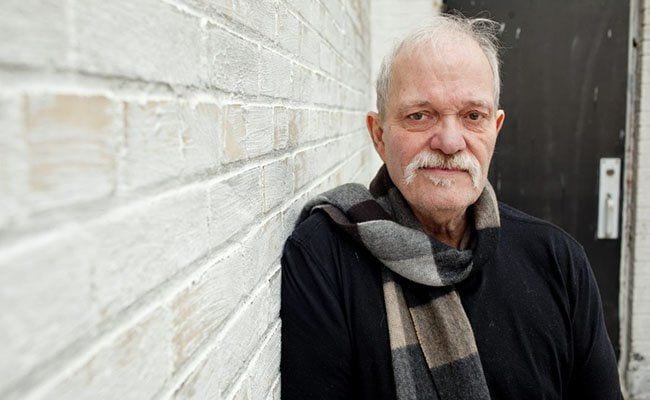Every obituary of the guitarist John Laird Abercrombie, who died of heart failure on Tuesday at 72, will mention his first recording on ECM Records, Timeless.
Timeless was the beginning of a long and subtle partnership between a true and popular jazz artist and his producer, a partnership that produced a wonderful recording as recently as this January, Up and Coming, by Abercrombie’s latest quartet.
That first recording from 1974 was a masterpiece, and few of us who heard it when it first came out had any doubt. It rewired out brains for a different kind of jazz guitar, and our brains have yet to unlearn that lesson.
“Lungs”, the performance that opens Timeless is a opus in two parts. The first is an uptempo piece of spacey jazz-rock fusion with a catchy two-bar theme followed by a short, slow contrasting theme. The groove of the tune — powered by the drummer Jack DeJohnette and the organ/synth bass of keyboardist Jan Hammer — is simply uptempo, four-on-the-floor swing. Abercrombie and Hammer follow the theme by trading fast eight-bar statements on biting electric guitar and organ. The conversation between them is so exciting, so full of cool ideas and instrumental facility and imagination, that you are excused for believing that this jazz-rock thing is never going to stop being great. But them something weird and more wonderful happens. The burning swing melts away into a spacey, slow atmosphere of two alternating chords, with all three players improvising at once. It’s a long stretch of space, it turns into a drum solo perhaps, but one in conversation with guitar and organ, and then a second metamorphosis comes: a simple pattern on synth bass that distantly evokes both the blues and reggae kicks in, DeJohnette pulls up a dastardly funk groove, and the leader plays a blues solo that fuses Muddy Waters, Jimi Hendrix, and a touch of Ornette Coleman.
This is John Abercrombie, one song into his career as a leader, changing the way you hear jazz.
Timeless also contained delicate acoustic ballads made you feel like you just missed out on your first kiss, mid-tempo swing, spirited groove, and electro-folk exploration. Rather than “a little bit of everything” it was a mission statement. Abercrombie would go on to rock, to rage in avant-garde freedom, to emote as a balladeer, and to swing with a careful deliberation. He had a singular sensibility that expressed itself in several important ways.
Pioneers of jazz guitar are an easily recited bunch: Charlie Christian, Django Reinhardt, Wes Montgomery, Tal Farlow, Lenny Breau . . . but Abercrombie was vital to the tradition because he was arguably the first of the incredible group that would blossom in the 1970s and beyond. He was arguably a template for Metheny and Frisell and Scofield — and certainly to the mature generation that includes Kurt Rosenwinkel, Ben Monder, Steve Cardenas, and Adam Rogers. I believe that no one was more critical is demonstrating how the guitar could be the indispensable instrument in jazz after 1970, capturing both the drive of rock and the lyricism of jazz.
Before he became a leader, Abercrombie was in all sorts of key spots on the scene. He was at Berklee before it seemed like everyone was. He played in the ahead-of-its-time Dreams with drummer Billy Cobham and horn players Michael and Randy Brecker, and he was featured in another pioneering band led by drummer Chico Hamilton. Abercrombie was a key partner to his peers as a generation figured out how to make jazz work with rock music — but also to let jazz be enriched by the experience. Though a jazz guitarist like George Benson may have seemed to the bigger star when Abercrombie was first making his mark, today it is Abercrombie whose work plainly set the path for the future.
Abercrombie would revisit his Timeless success with another organ trio setting on 1992’s While We’re Young, but his range was impressive. His early success did not restrict him. The duets with label mate and guitarist Ralph Towner (Sargasso Sea 1976) were unlike any other, and his trio work with DeJohnette and bassist Dave Holland (Gateway 1975 and Gateway 2 1977) was either pastoral or, more often, searing and expressionistic. He started recording with pianists in a quartet setting in the 1980s and tinkered with that formula for decades, using Mark Feldman on violin rather than piano for a while. 2017’s Up and Coming is a beautiful last chapter for the band, featuring pianist Marc Copland. While the playing tends to the delicate, it also has hop when necessary.
What you will hear on any John Abercrombie recording, however, is intelligent, probing, and lyrical improvisation. Sometimes he works from standards, sometimes he mines the blues, and often he does that magical thing that Thelonious Monk so famously advised: work from the melody of the song.
John Abercrombie never played by the numbers, running through the chords like they were formulas, valuing speed or technique or “chops” over making the music beautiful, logical, elegant, moving, bold, daring, tender, or true.
It isn’t hard to find a great John Abercrombie recording. Just spin around and point your finger because the good stuff is everywhere. His style was, indeed, timeless. And we’d miss him even more if he hadn’t gifted us so much immortal music.

